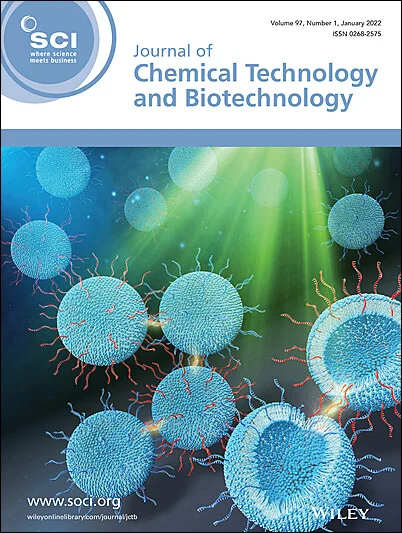Humberto Garcia Castellanos, Yashar Aryanfar, Soheil Mohtaram, Ali Keçebaş, Gülşah Karaca-Dolgun, Shabbir Ahmad, Abdullah Naser M. Asiri, Saiful Islam
求助PDF
{"title":"The efficacy of nano-cellulose-based composites in heavy metal removal from wastewater: a comprehensive review","authors":"Humberto Garcia Castellanos, Yashar Aryanfar, Soheil Mohtaram, Ali Keçebaş, Gülşah Karaca-Dolgun, Shabbir Ahmad, Abdullah Naser M. Asiri, Saiful Islam","doi":"10.1002/jctb.7775","DOIUrl":null,"url":null,"abstract":"<p>This comprehensive study delves into the innovative application of nano-cellulose-based composites for addressing the multifaceted challenges of wastewater treatment. This review introduces the innovative use of nano-cellulose composites, particularly highlighting the novel synthesis routes that enhance their pollutant adsorption capabilities beyond conventional materials. These materials stand out for their regenerative properties and integration with functionalized matrix materials, marking significant advancements in sustainable wastewater treatment technologies. As the environmental and public health risks associated with untreated wastewater escalate, the development of efficient and sustainable treatment technologies has become crucial. Nano-cellulose composites, derived from natural and renewable sources, offer significant advantages, including high surface area, superior mechanical strength, and notable biodegradability. This review explores various synthesis methods—mechanical, chemical, and enzymatic—that enhance the adaptability of nano-cellulose composites to meet specific treatment needs. Main findings demonstrate these composites' effectiveness in removing a wide array of pollutants, including heavy metals, organic compounds, dyes, and microbial contaminants, with detailed removal capacities provided for each pollutant category in comparative tables. The potential for regeneration and reuse highlights their practical sustainability and economic viability. Future research should focus on improving production scalability and cost-effectiveness, assessing environmental impacts and ensuring regulatory compliance to advance the application of nano-cellulose composites in wastewater treatment. This study paves the way for these materials to become central to innovative, efficient, and eco-friendly wastewater management strategies. © 2024 Society of Chemical Industry (SCI).</p>","PeriodicalId":15335,"journal":{"name":"Journal of chemical technology and biotechnology","volume":"100 2","pages":"291-312"},"PeriodicalIF":2.8000,"publicationDate":"2024-11-05","publicationTypes":"Journal Article","fieldsOfStudy":null,"isOpenAccess":false,"openAccessPdf":"","citationCount":"0","resultStr":null,"platform":"Semanticscholar","paperid":null,"PeriodicalName":"Journal of chemical technology and biotechnology","FirstCategoryId":"5","ListUrlMain":"https://onlinelibrary.wiley.com/doi/10.1002/jctb.7775","RegionNum":4,"RegionCategory":"生物学","ArticlePicture":[],"TitleCN":null,"AbstractTextCN":null,"PMCID":null,"EPubDate":"","PubModel":"","JCR":"Q3","JCRName":"BIOTECHNOLOGY & APPLIED MICROBIOLOGY","Score":null,"Total":0}
引用次数: 0
引用
批量引用
The efficacy of nano-cellulose-based composites in heavy metal removal from wastewater: a comprehensive review
This comprehensive study delves into the innovative application of nano-cellulose-based composites for addressing the multifaceted challenges of wastewater treatment. This review introduces the innovative use of nano-cellulose composites, particularly highlighting the novel synthesis routes that enhance their pollutant adsorption capabilities beyond conventional materials. These materials stand out for their regenerative properties and integration with functionalized matrix materials, marking significant advancements in sustainable wastewater treatment technologies. As the environmental and public health risks associated with untreated wastewater escalate, the development of efficient and sustainable treatment technologies has become crucial. Nano-cellulose composites, derived from natural and renewable sources, offer significant advantages, including high surface area, superior mechanical strength, and notable biodegradability. This review explores various synthesis methods—mechanical, chemical, and enzymatic—that enhance the adaptability of nano-cellulose composites to meet specific treatment needs. Main findings demonstrate these composites' effectiveness in removing a wide array of pollutants, including heavy metals, organic compounds, dyes, and microbial contaminants, with detailed removal capacities provided for each pollutant category in comparative tables. The potential for regeneration and reuse highlights their practical sustainability and economic viability. Future research should focus on improving production scalability and cost-effectiveness, assessing environmental impacts and ensuring regulatory compliance to advance the application of nano-cellulose composites in wastewater treatment. This study paves the way for these materials to become central to innovative, efficient, and eco-friendly wastewater management strategies. © 2024 Society of Chemical Industry (SCI).

 求助内容:
求助内容: 应助结果提醒方式:
应助结果提醒方式:


